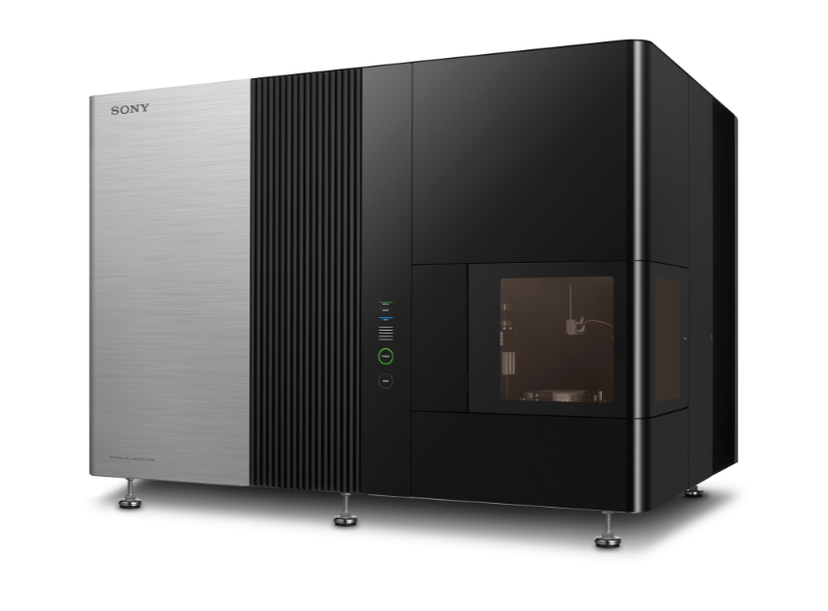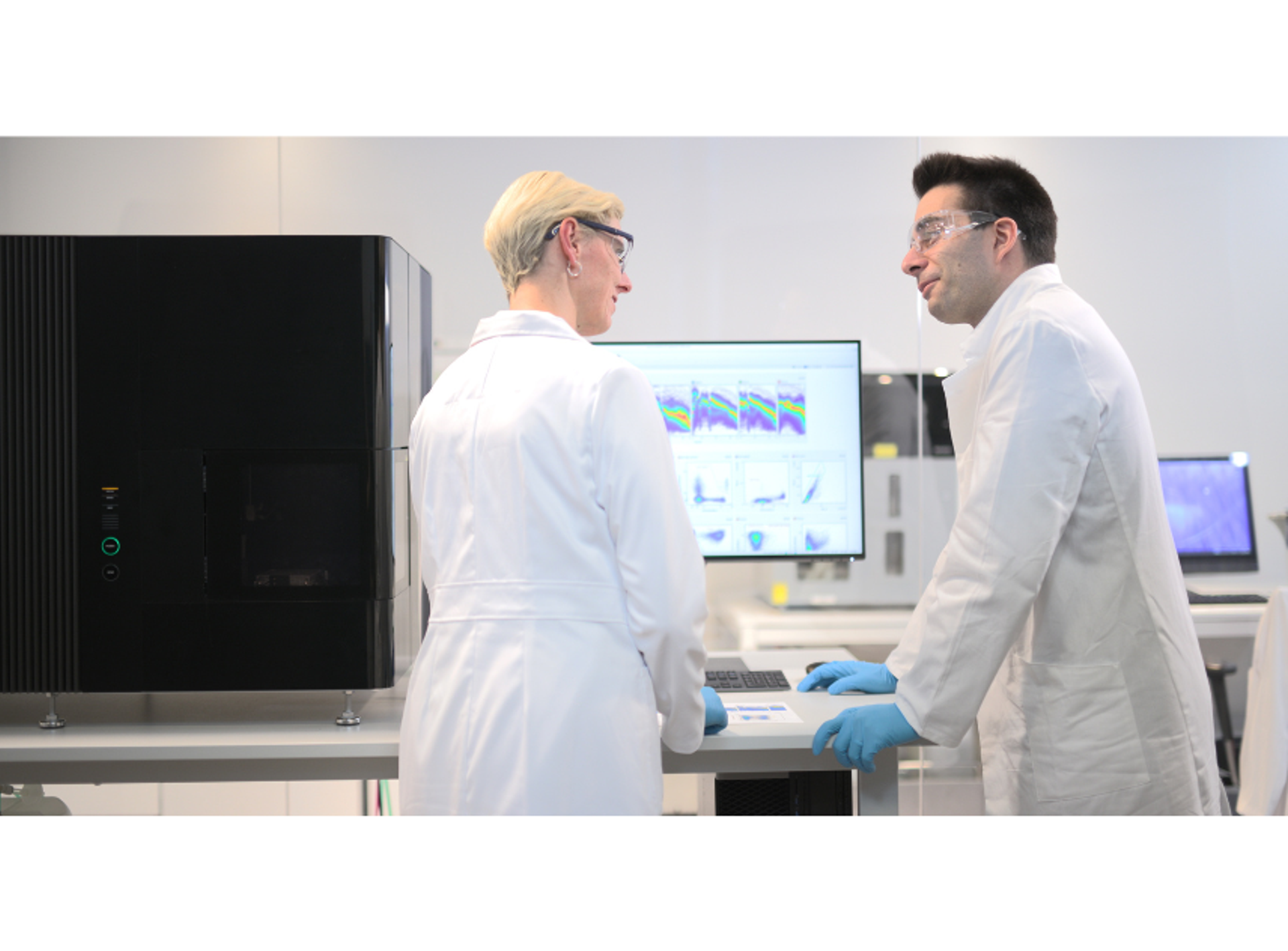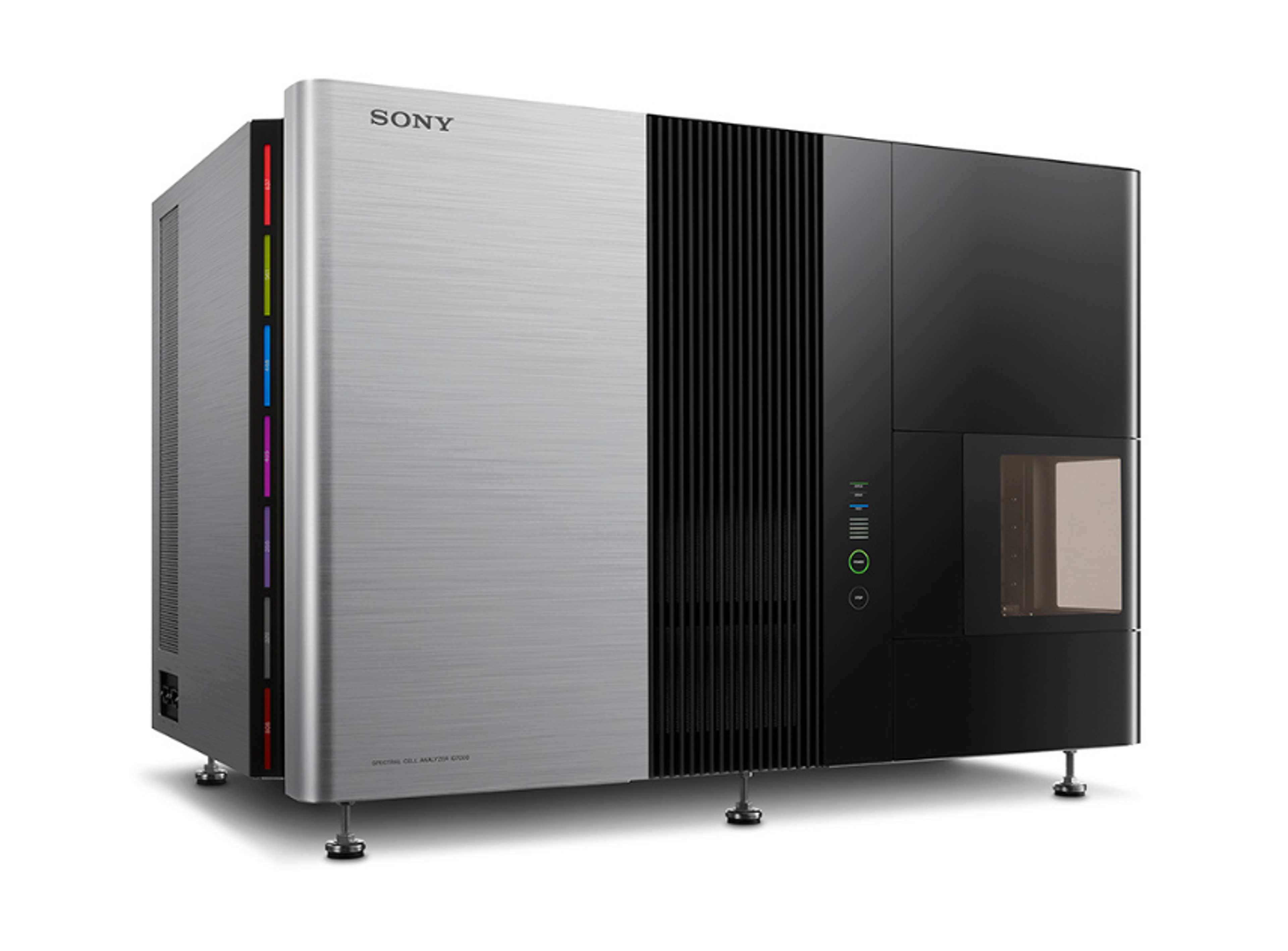How to transition to spectral flow cytometry
Explore best practices and understand the benefits of making the switch to spectral flow cytometry
24 Mar 2025Flow cytometry has long been a cornerstone technology in cell biology, allowing researchers to analyze complex populations of cells with precision. However, traditional flow cytometry methods are increasingly being complemented, and in some cases, replaced by spectral flow cytometry, a cutting-edge technology that offers unprecedented capabilities.
If you're considering making the switch in your lab, Dr. Maria Johansson, Head of the Department of Microbiology, Tumor, and Cell Biology at Karolinska Institutet, shares insights that will guide you through the benefits and practicalities of adopting spectral flow cytometry.
What is spectral flow cytometry?

The ID7000 spectral cell analyzer by Sony Biotechnology
Spectral flow cytometry represents a significant advancement in cell analysis technology. Unlike traditional flow cytometry, which uses a limited number of detectors to measure fluorescence, spectral flow cytometry collects data across the entire emission spectrum of each fluorochrome. This method allows for the simultaneous detection and analysis of a much larger number of fluorescent markers.
Sony Biotechnology’s ID7000 spectral cell analyzer, for instance, expands the boundaries of cell analysis by utilizing up to seven lasers and 186 detectors. This setup enables researchers to perform experiments using 44 colors, limited only by the fluorochromes available. The ID7000 collects continuous light from 360 nm to 920 nm, providing more comprehensive data and enabling precise measurement of spectrally adjacent fluorochromes and fluorescent proteins.
Why switch to spectral flow cytometry?
Enhanced sensitivity and comprehensive data
Spectral flow cytometry, exemplified by the ID7000, pushes the boundaries of cell analysis. The ID7000's advanced configuration allows for the use of up to 44 colors, providing more comprehensive data than traditional cytometry. "The high sensitivity and ease of use of spectral flow cytometry benefit not only large panels but also smaller panels, making it a versatile tool in our facility," highlights Dr. Johansson.
Streamlined high-parameter experiments
One of the standout features of the ID7000 is its ability to handle high-parameter experiments efficiently. This capability is crucial for researchers dealing with complex and heterogeneous cell populations. The ID7000's spectral technology allows for the precise measurement of spectrally adjacent fluorochromes and fluorescent proteins, enhancing the accuracy of data. "The autofluorescence extraction in the ID7000 provides much better detection and sensitivity for analyzing fluorescent proteins like GFP and mCherry, especially in small populations or those with low intensity," notes Dr. Johansson. This enhanced capability means researchers can gain more detailed insights into their samples, pushing the boundaries of what is possible in flow cytometry.
User-friendly automation
The ID7000 is designed to simplify the flow cytometry workflow with intuitive, guided software. Automation features from startup to shutdown, including automated acquisition, quality control, and experiment creation, reduce the manual burden on researchers. The system's AutoSampler with active agitation ensures that cells remain in suspension during sample acquisition, allowing for walkaway operation. "Our users appreciate the automated acquisition and shutdown features of the ID7000," shares Dr. Johansson. "It saves time and effort, especially for long overnight experiments."

The ID7000 is designed to simplify the flow cytometry workflow with automation features, from startup to shutdown, and intuitive, guided software
Training and transitioning
Switching to spectral flow cytometry requires proper training to ensure that users can fully utilize the new technology. At Karolinska Institutet, Dr. Johansson and her team have developed a robust training program to facilitate this transition. The program begins with a webinar introduction to spectral flow technology, followed by practical training sessions.
"The training covers the full workflow, from experiment design to sample acquisition, unmixing, and data export. It includes two sessions: practical acquisition and unmixing and analysis,” Dr. Johansson explains. “This hands-on approach helps users become comfortable with the new system."
Initial training is just the beginning. Continuous support is essential to ensure that users can effectively leverage spectral flow cytometry. The core facility at Karolinska Institutet provides troubleshooting assistance and advice based on users' needs. Regular seminars, webinars, and user group meetings further support the users.
Dr. Johansson emphasizes, "We don't leave users on their own after the initial training. Ongoing support and user group meetings are crucial for guiding users through the complexities of spectral flow cytometry.
Implement best practices to overcome challenges
One new concepts that researchers encounter with spectral flow cytometry is autofluorescence analysis. This step can be challenging, but it is essential for accurate data interpretation. The ID7000's Autofluorescence Finder feature helps identify and subtract contributions from autofluorescent populations, ensuring higher data fidelity.
"Autofluorescence analysis is often a new concept for many users," says Dr. Johansson. "It's a crucial part of the analysis workflow, and we see many questions about it. Proper training and support are key to mastering this aspect."
The future of spectral flow cytometry
Spectral flow cytometry is not just a technological upgrade; it opens new avenues for research. The ability to analyze large and complex panels with high sensitivity allows for more detailed and comprehensive studies.
Dr. Johansson is particularly excited about the potential for immunophenotyping human NK cells, a project currently underway at her facility. "We are in the process of designing a large immunophenotyping panel for human NK cells," she says. "This is very exciting and will significantly advance our research capabilities."
The transition to spectral flow cytometry at Karolinska Institutet has been smooth, with around 60 users trained in just over a year. The high interest and positive reception underscore the technology's benefits and the effectiveness of the training and support programs. “We have had a big interest and good turnout for training,” Dr. Johansson notes. “The ease of use and high sensitivity of the ID7000 have made it an attractive option for many researchers.”
Overall, switching from traditional flow cytometry to spectral flow cytometry is a significant step that offers numerous benefits, including enhanced sensitivity, comprehensive data, streamlined workflows, and user-friendly automation. Proper training and ongoing support are essential to fully realize these advantages. As demonstrated by Dr. Johansson and her team, the transition can lead to exciting new research opportunities and more efficient cell analysis.
If you’re considering making the switch and want to learn more about the ID7000 by Sony Biotechnology, watch Dr. Johansson’s full video interview here.

